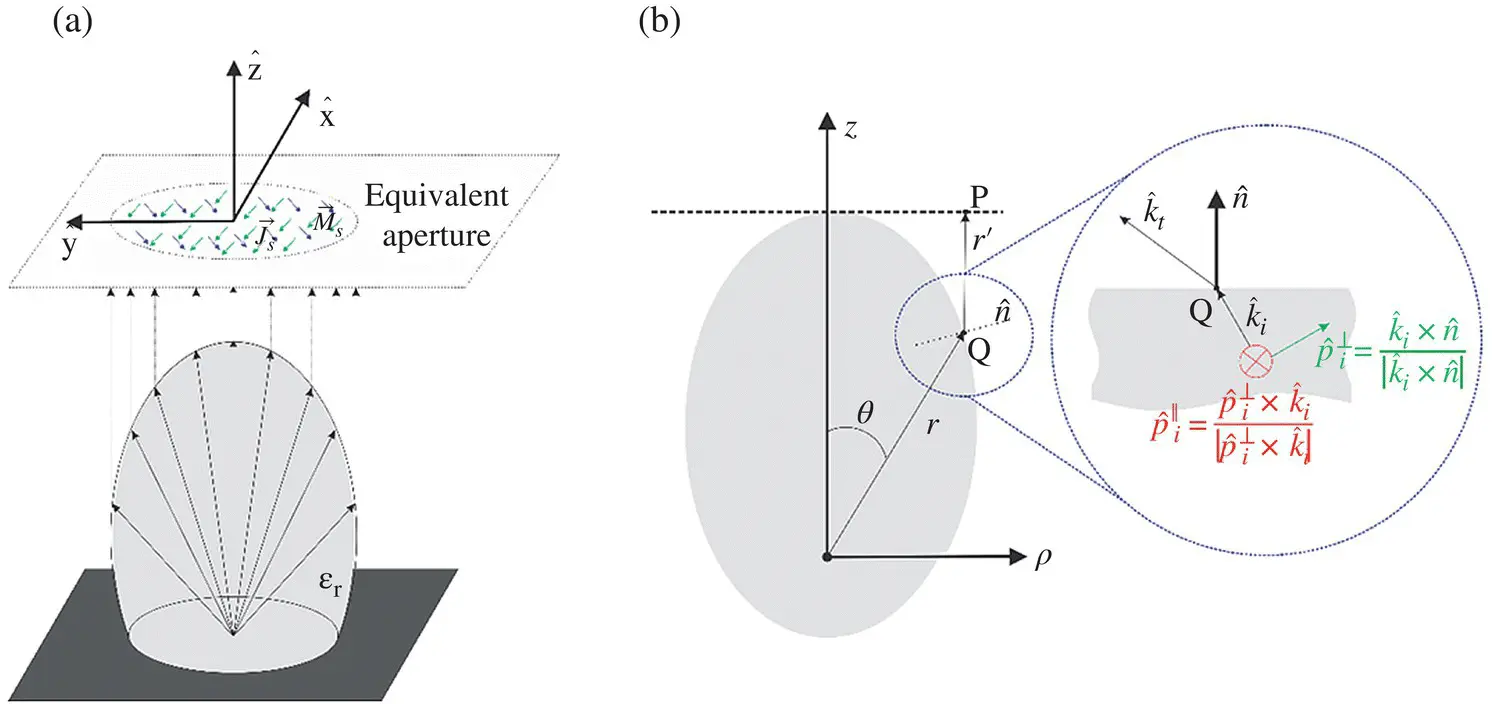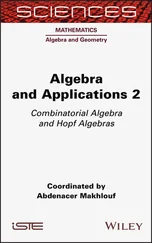1 ...7 8 9 11 12 13 ...21 (2.3) 
using (2.1)and (2.2)we conclude on the following equation:
(2.4) 
On the other hand, we know that an elliptical lens geometry can be described in polar coordinates using the following expression:
(2.5) 
where a and e are the semi‐major axis and eccentricity, respectively (see Figure 2.2b).
By recognizing in (2.5)that:
(2.6) 
(2.7) 
we can conclude that a spherical wave front produced by an antenna at the focus point of a lens of with an ellipsoidal shape will be transformed into a planar waveform. The antenna is placed at the second focus of an ellipse defined by the equation:
(2.8) 
where b is the semi-minor axis of a ellipse. The eccentricity of the lens e , relates the geometric focus ellipse to the optical focus of the lens with the following relationship:
(2.9) 
using Eqs. (2.7)and (2.8)we can derive the foci of the ellipse, defined as c as:
(2.10) 
and the semi‐minor axis b as:
(2.11) 
The radiation pattern obtained by elliptical lenses is the one that reaches the highest possible directivity when illuminated with a spherical phase front generated by the feeding antenna.
2.2.2 Radiation of Elliptical Lenses
For electrically moderate and large lenses, the use of high frequency analysis techniques is typically the preferred approach. These techniques are based on Physical Optical (PO) where the field scattered by the lens is evaluated from an equivalent surface currents approximated using the incident field. These currents can be evaluated directly either at the lens surface [32] or over a planar aperture, just above the lens as shown in Figure 2.3a. In both cases, the incident field coming from a known feed is propagated until these considered surfaces using a GO approach. Then, the equivalent current densities are integrated with the free space Green's function to obtain the field radiated by the lens antenna.

Figure 2.3(a) Equivalent aperture on top of the elliptical lens antenna. (b) Scheme of the ray tracing of the elliptical lens antenna at a point Q in the surface.
In this section, we will derive an approximate analytical expression of these equivalent currents over a planar surface on top of the lens. This expression is valid only when the feed phase center is located in the lower focus of the ellipse and the lens surface is in the far field of the feeder. This expression can be used to perform a fast optimization of the lens and planar feeder. In order to explain this analysis method we will first evaluate the equivalent current distribution over a plane parallel to the lens aperture (i.e. that lies outside of the lens, see Figure 2.3a). The reference system used to evaluate the radiation patterns of the lens antenna is the one shown in Figure 2.3a. There are three approximations to calculate these equivalent surface currents:
First is a GO approximation of the fields. The fields over the aperture are well‐approximated by the fields transmitted by the lens considering a locally flat surface to derive the transmission coefficients. The dyadic representation of the transmitted field to the incident field on the lens surface is:
(2.12) 
(2.13) 
where ζ 0is the free space wave impedance, S ( Q ) is the spreading factor that ensures the power density within the solid angle of the feed is equal to the power density transmitted by the lens.  is the transfer function calculated using the Snell's law.
is the transfer function calculated using the Snell's law.  is the radiated field by the feed placed at the lower focus of the ellipse, at an observation point Q (see Figure 2.3b). The fields in (2.12)and (2.13)are propagating in the
is the radiated field by the feed placed at the lower focus of the ellipse, at an observation point Q (see Figure 2.3b). The fields in (2.12)and (2.13)are propagating in the  direction.
direction.
Second is an approximation of the equivalent currents. The equivalent electric and magnetic currents are obtained from these GO fields:
(2.14) 
(2.15) 
which are defined for ρ < D /2 with D = 2 b (twice the minor axis of the ellipse) associated with the GO field domain, and zero outside this domain.
The third approximation relies on the fact that we assume the incident field on the lens surface  to have a spherical wave front, which is correct when the feed phase center is in the lower focus and the lens surface in the feed far field:
to have a spherical wave front, which is correct when the feed phase center is in the lower focus and the lens surface in the feed far field:
(2.16) 
Читать дальше













 is the transfer function calculated using the Snell's law.
is the transfer function calculated using the Snell's law.  is the radiated field by the feed placed at the lower focus of the ellipse, at an observation point Q (see Figure 2.3b). The fields in (2.12)and (2.13)are propagating in the
is the radiated field by the feed placed at the lower focus of the ellipse, at an observation point Q (see Figure 2.3b). The fields in (2.12)and (2.13)are propagating in the  direction.
direction.

 to have a spherical wave front, which is correct when the feed phase center is in the lower focus and the lens surface in the feed far field:
to have a spherical wave front, which is correct when the feed phase center is in the lower focus and the lens surface in the feed far field:











